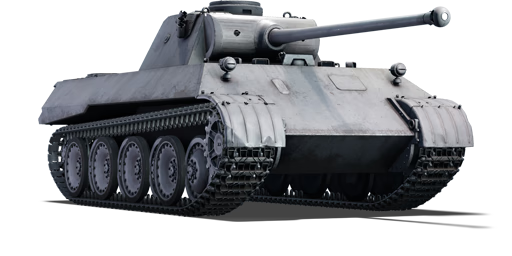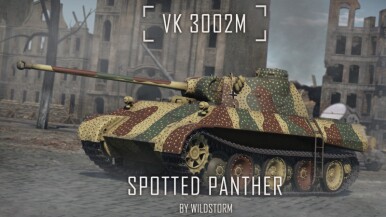



The VK 3002 (M) is a medium tank prototype created for the German Wehrmacht during World War II by the Maschinenfabrik Augsburg-Nürnberg (MAN) in response to a proposal by the Ministry of Armaments and War Production for a 30-ton tank to be used by the German Army in 1941. Daimler-Benz also created its project, known as the VK 3002 (DB), as a competitive prototype. Germany expected to face a weaker opponent when it attacked the Soviet Union in June 1941. The Wehrmacht was taken by surprise by the T-34's sloping armour and the heavily armoured KV-1. German Generaloberst Heinz Guderian first proposed that a direct replica would be the most efficient way to combat the T-34. The Army Weapons Department rejected this due to difficulty in creating sufficient quantities of diesel engines and steel alloy. The Daimler-Benz VK 3002 (DB) was first ordered into production with an initial goal of 200 tanks, mainly due to Hitler's preference for the design. The Waffenprufamt 6 committee, on the other hand, preferred the more traditional (in terms of German design and engineering) MAN VK 3002 (M) and placed orders for it in May 1942, before secretly cancelling the VK 3002 (DB) order. While the VK 3002 (DB) could have been less expensive and easier to construct, the Waffenprüfamt 6 committee preferred the MAN VK 3002 (M)'s roomier turret and more cutting-edge suspension. The MAN VK 3002 (M) also used the same engine as the Tiger I heavy tank, making production and maintenance easier. It also had larger tracks, which would aid in ground pressure on soft terrain. The VK 3002 (M) was built but never saw combat.
Introduced in Update "Drone Age", the VK 3002 (M) is the prototype for what would ultimately become the iconic Panzerkampfwagen V Panther medium tank family for the German Army during World War II. The VK 3002 (M) tank was designed ahead of its time and includes various advanced features, such as overlapping road wheels that disperse pressure more evenly when going over soft terrain. When compared to Allied tanks, the VK 3002 (M) has unrivalled firepower and precision thanks to its long-barrelled 75 mm Kampfwagenkanone (KwK) 42 L/70 tank gun. However, since the turret is cranked by hand, the traverse speed is poor, and close-quarters battles with enemy tanks in towns are not encouraged. To make the most of this tank's powerful main gun, use it as a long-range sniper.
| Ammunition | Type | Armor penetration (mm) at a distance: | |||||
|---|---|---|---|---|---|---|---|
| 10 m | 100 m | 500 m | 1000 m | 1500 m | 2000 m | ||
| APCBC | 192 | 188 | 173 | 156 | 140 | 126 | |
| HE | 13 | 12 | 11 | 11 | 11 | 11 | |
| Belt | Belt filling | Armor penetration (mm) at a distance: | |||||
|---|---|---|---|---|---|---|---|
| 10 m | 100 m | 500 m | 1000 m | 1500 m | 2000 m | ||
| AP/AP/AP-T | 13 | 12 | 7 | 3 | 2 | 0 | |












Mobility | |
|---|---|
Protection |
|---|
Firepower | |
|---|---|
